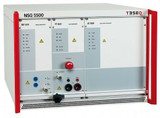The EMC Shop specializes in automotive emc testing according to ISO 7637, ISO 11452, CISPR 25, Ford FMC1278 and more. Rent or buy turnkey automotive EMC test equipment and begin testing immediately.
EM Test UCS 200N50 Automotive Transient Simulator
SKU: 11183















